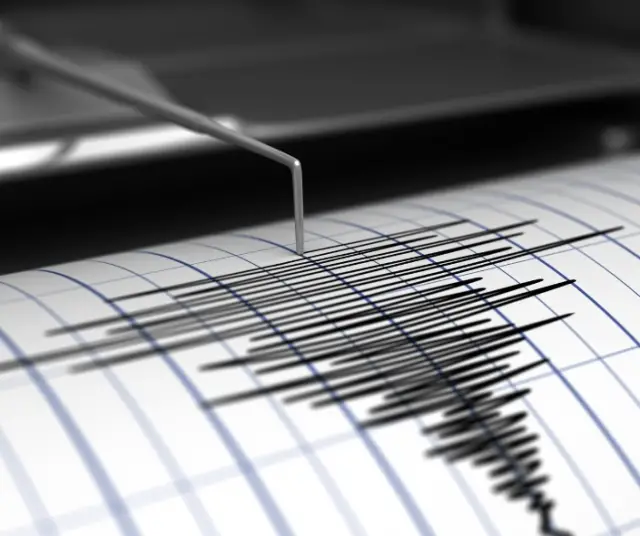Chile is known worldwide for its high seismic activity, experiencing repetitive and strong earthquakes throughout its history. This dynamic geography has led to questions about the reason behind these recurring earthquakes in the country. We will examine in detail the causes and factors that contribute to the seismic activity in Chile, as well as the implications for the population and the mitigation and prevention measures implemented.
The geographical location of Chile
Chile is in a highly seismic zone due to its geographical location. The country straddles the well-known Nazca-South American Fault, where the Nazca Plate subducts beneath the South American Plate. This convergence of tectonic plates is the main cause of earthquakes in Chile.
The subduction of the Nazca Plate
The subduction of the Nazca Plate is a fundamental geological process that takes place on the west coast of South America. This tectonic plate, one of the largest and most active on Earth, is sinking below the South American Plate, generating a series of significant effects in the region. Below, we will explore this process and its implications in detail:
Location and boundaries of the Nazca Plate
The Nazca Plate covers a large area in the eastern Pacific Ocean, extending from the coast of South America, including Peru and Chile, to the Peru-Chile Trench. It is bordered by the South American Plate to the east, the Cocos Plate to the north, and the Antarctic Plate to the south.
Geological features of the Nazca Plate
The Nazca Plate is an oceanic plate composed mainly of basaltic oceanic crust and a thin layer of sediments. It is denser than the South American Plate, leading to its subduction under the latter.
subduction process
Subduction is the process in which one tectonic plate slides under another at a convergence zone. In the case of the Nazca Plate, it subducts under the South American Plate in the so-called Nazca-South America Subduction Zone. This subduction is one of the main causes of earthquakes and volcanic activity in the region.
Interaction between the plates
The interaction between the Nazca Plate and the South American Plate is complex and dynamic. The subduction of the Nazca Plate under the South American Plate generates a large amount of energy that builds up as the plate slides inland from Earth. This energy is released in the form of earthquakes and volcanic eruptions.
Peru-Chile Trench
The Peru-Chile Trench is one of the deepest oceanic trenches in the world and is located in the subduction zone between the Nazca Plate and the South American Plate. The subduction of the plate generates an oceanic trench, which in this case is known as the Atacama Trench.
seismic and volcanic activity
The subduction of the Nazca Plate under the South American Plate produces intense seismic activity in the region. The release of accumulated energy gives rise to earthquakes of different magnitudes, some of which can be highly destructive. In addition, subduction also spawns a chain of volcanoes along the Andes, known as the Pacific Ring of Fire, where some of the world's most active volcanoes are found.
Geological and geophysical implications
The subduction of the Nazca Plate has various implications for the geology and geophysics of the region. The compression and deformation of the earth's crust along the subduction zone have given rise to the formation of mountains and ranges, such as the Andes. In addition, subduction is responsible for the generation of ocean trenches, volcanic arcs, and the characteristic seismic activity of the region.
Scientific research and monitoring
The subduction of the Nazca Plate has been the subject of intense scientific investigation. Scientists use various techniques, such as seismic monitoring, underwater mapping, and seismic tomography surveys, to better understand the processes associated with subduction and to predict seismic and volcanic activity.
The effects of earthquakes on the population and infrastructure
The repetitive earthquakes in Chile have a significant impact on the country's population and infrastructure. Earthquakes can cause structural damage to buildings, bridges, and roads, as well as disruptions to public services. In addition, earthquakes can generate tsunamis on the coast, representing an additional threat to coastal communities.
Mitigation and prevention measures
Given the seismic nature of Chile, the country has implemented mitigation and prevention measures to reduce the impact of earthquakes on the population. This includes the implementation of rigorous earthquake-resistant building codes, public education on earthquake preparedness and response, and constant monitoring of seismic activity through seismic networks.
Scientific research plays a fundamental role in understanding seismic activity in Chile. Scientists study historical and current seismicity, analyze data collected by seismic monitoring networks, and conduct research to better understand the geological processes responsible for earthquakes in the country. This research contributes to the improvement of early warning systems and disaster mitigation planning.
